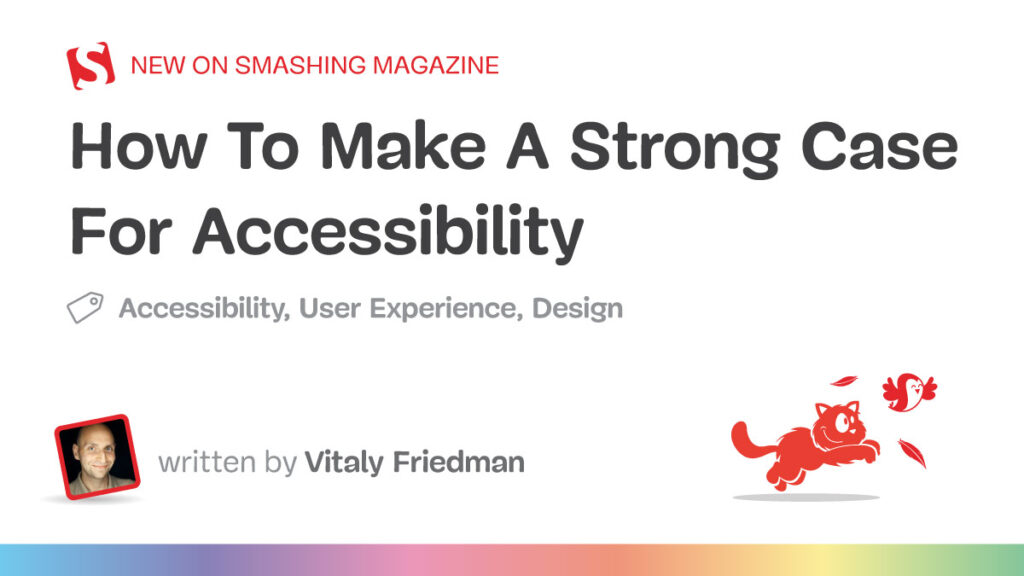Immediately, I’ll cowl Chart.js, a very fashionable JavaScript library, and train you the way to incorporate charts of this library into Bootstrap 5 tabs/pills. The concept is that every time we click on on a Bootstrap tab, the goal chart might be reconstructed and therefore reanimated.
Keep in mind that this system can work for embedding such a chart right into a tab element of any front-end framework.
Stand up to Pace With Charts
In earlier tutorials, I’ve proven you the way to create completely different sorts of charts using both solely CSS or a JavaScript charting library like HighCharts.js. Dive in and discover your favorite strategy!
What are Tabs/Tablets?
Tabs assist us divide content material into a number of sections that dwell below a typical mum or dad. At any given time, solely one among these sections is seen. Think about them like browser tabs with the distinction that you just don’t have to vary the web page to view all of them.



Tablets are a tabs variation.



For this demonstration, as mentioned above, we’ll work with Bootstrap tabs/pills.
What’s Chart.js?
Chart.js is among the most dominant JavaScript charting libraries with over 62K GitHub Stars. It’s free, simple to make use of, customizable, and appropriate with all main JavaScript frameworks. Not like different charting libraries that render chart parts as SVGs, it’s an HTML5 canvas-based charting library.
It helps all of the widespread chart sorts like bar (column) charts, line charts, pie charts, and donut charts but in addition extra advanced ones like radar charts. In our case, we’ll work with bar charts.
Required Property
To kick issues off, we’ll embody the required Bootstrap and Chart.js information inside our CodePen demo:






Optionally, we’ll embody a customized Google Font that might be a superb instance for studying the way to add a customized font to Chart.js.
Knowledge
In our case, we’ll have three tabs, so we’ll create three charts. Knowledge might be completely different for every chart. In a real-world state of affairs, the info would come from a third-party system like a CMS, and we’d need to ship it to our JavaScript for manipulation. Right here, we’ll work with some dummy, hardcoded knowledge, however in one other tutorial, I’ll present you the way to create these knowledge dynamically by way of WordPress.
In any case, the essential factor is the info construction. Our knowledge will dwell below an array of objects (yours might be completely different)—every object will symbolize a chart:
1 |
const charts = [ |
2 |
{
|
3 |
bars: { |
4 |
bar1: ["25", "76", "64", "33", "85", "46", "25"], |
5 |
bar2: ["32", "68", "77", "29", "88", "65", "60"] |
6 |
},
|
7 |
labels: [ |
8 |
"Label 1", |
9 |
"Label 2", |
10 |
"Label 3", |
11 |
"Label 4", |
12 |
"Label 5", |
13 |
"Label 6", |
14 |
"Label 7" |
15 |
],
|
16 |
legends: { legend1: "Male", legend2: "Feminine" }, |
17 |
title: "Gender Comparability Graph" |
18 |
},
|
19 |
//two extra objects right here
|
20 |
];
|
Chart.js Integration With Bootstrap Tabs
We’ll create a Bootstrap tab element by copying the basic code that’s offered within the documentation and simply altering the texts.



Inside every panel, we’ll place a distinct canvas aspect—keep in mind Charts.js is a canvas-based library.
Right here’s the markup:
1 |
|
2 |
|
3 |
|
4 |
|
5 |
|
6 |
|
7 |
|
8 |
|
9 |
|
10 |
|
11 |
|
12 |
|
13 |
|
14 |
|
15 |
|
16 |
|
17 |
|
18 |
|
19 |
|
20 |
|
21 |
|
22 |
|
23 |
|
24 |
|
By default, by way of the Chart.defaults object (print its contents within the console!), we’ll pressure our chart texts to have a darkish cyan colour and render a customized Google Font. Bear in mind to set choices by way of this world object in case you will have charts that share widespread issues.
1 |
Chart.defaults.font.household = "Poppins, sans-serif"; |
2 |
Chart.defaults.colour = "#073b4c"; |
With the assistance of the shown.bs.tab Bootstrap tab occasion, every time a brand new tab is proven, we’ll seize the index of the lively tab and go it as a parameter of the initializeSingleChart() operate. We’ll additionally name that operate initially and go it 0 (arrays are zero-based) to render the chart of the primary tab which is by default lively.
Word that we might go a distinct quantity if we wished to have one other lively tab by default.
1 |
const tabEls = doc.querySelectorAll('button[data-bs-toggle="tab"]'); |
2 |
initializeSingleChart(0); |
3 |
|
4 |
tabEls.forEach(operate (tabEl) { |
5 |
tabEl.addEventListener("proven.bs.tab", operate (occasion) { |
6 |
const index = Array.from(tabEls).indexOf(occasion.goal); |
7 |
initializeSingleChart(index); |
8 |
});
|
9 |
});
|
Contained in the initializeSingleChart() operate, we’ll assemble the column chart of the related tab panel. However right here’s the factor: to replay the animation upon tab click on, we’ll first destroy the chart if it exists, then reconstruct it.
An alternate implementation, maybe much more stable, particularly in case you have plenty of knowledge, as an alternative of destroying and recreating it, may be to in some way replace the chart utilizing the update() methodology.
Lastly, we’ll present the values of the y-axis as percentages by creating custom tick formats.
Right here’s the required JavaScript code:
1 |
operate initializeSingleChart(index) { |
2 |
const chart = charts[index]; |
3 |
const chartEl = `myChart${++index}`; |
4 |
const chartInstance = Chart.getChart(chartEl); |
5 |
|
6 |
if (chartInstance !== undefined) { |
7 |
chartInstance.destroy(); |
8 |
}
|
9 |
|
10 |
const knowledge = { |
11 |
labels: chart.labels, |
12 |
datasets: [ |
13 |
{
|
14 |
label: chart.legends.legend1, |
15 |
data: chart.bars.bar1, |
16 |
backgroundColor: "#dc3545" |
17 |
},
|
18 |
{
|
19 |
label: chart.legends.legend2, |
20 |
data: chart.bars.bar2, |
21 |
backgroundColor: "#198754" |
22 |
}
|
23 |
]
|
24 |
};
|
25 |
|
26 |
const config = { |
27 |
kind: "bar", |
28 |
knowledge, |
29 |
choices: { |
30 |
plugins: { |
31 |
title: { |
32 |
show: true, |
33 |
textual content: chart.title, |
34 |
place: "prime", |
35 |
font: { |
36 |
dimension: 25 |
37 |
},
|
38 |
padding: { |
39 |
prime: 15, |
40 |
backside: 15 |
41 |
}
|
42 |
},
|
43 |
legend: { |
44 |
place: "backside", |
45 |
labels: { |
46 |
padding: 30, |
47 |
font: { |
48 |
dimension: 14 |
49 |
}
|
50 |
}
|
51 |
},
|
52 |
tooltip: { |
53 |
enabled: false |
54 |
}
|
55 |
},
|
56 |
scales: { |
57 |
y: { |
58 |
ticks: { |
59 |
crossAlign: "left", |
60 |
callback: operate (val) { |
61 |
return `${val}%`; |
62 |
}
|
63 |
}
|
64 |
}
|
65 |
}
|
66 |
}
|
67 |
};
|
68 |
|
69 |
const ctx = doc.getElementById(chartEl).getContext("second"); |
70 |
new Chart(ctx, config); |
71 |
}
|
Chart.js Integration With Bootstrap Tablets
We’ll create a Bootstrap tablet element by copying the basic code that’s offered within the documentation and simply altering the texts.



Right here’s the markup:
1 |
|
2 |
|
3 |
|
4 |
|
5 |
|
6 |
|
7 |
|
8 |
|
9 |
|
10 |
|
11 |
|
12 |
|
13 |
|
14 |
|
15 |
|
16 |
|
17 |
|
18 |
|
19 |
|
20 |
|
21 |
|
22 |
|
23 |
|
24 |
|
The remainder of the JavaScript code stays the identical other than two adjustments: first, we’ll goal tablets and never tabs. Secondly, we’ll change the bottom axis of the dataset from x to y through the indexAxis property. This manner, we’ll change our chart from vertical to horizontal. Because of that, we’ll present as percentages the values of the x-axis and never the y-axis.
Listed here are the code variations in comparison with the tabs:
1 |
const tabEls = doc.querySelectorAll('button[data-bs-toggle="pill"]'); |
2 |
|
3 |
...
|
4 |
|
5 |
operate initializeSingleChart(index) { |
6 |
...
|
7 |
|
8 |
indexAxis: "y", |
9 |
scales: { |
10 |
x: { |
11 |
ticks: { |
12 |
callback: operate (val) { |
13 |
return `${val}%`; |
14 |
}
|
15 |
}
|
16 |
}
|
17 |
}
|
18 |
}
|
Conclusion
Completed! Throughout this tutorial, we discovered the way to create and animate horizontal and vertical bar charts utilizing the Chart.js library every time a Bootstrap 5 tab/tablet turns into lively. As talked about earlier than, keep in mind that this implementation will work with different front-end frameworks in addition to for different chart sorts.
Let’s recall what we constructed right this moment:
In one other tutorial, I’ll present you the way to make the hardcoded knowledge we used right here dynamic, by pulling it from the WordPress CMS. This manner, you’ll have whole management of making any chart kind you need with actual knowledge and even embedding it in front-end framework parts like tabs!
As all the time, thanks lots for studying!


